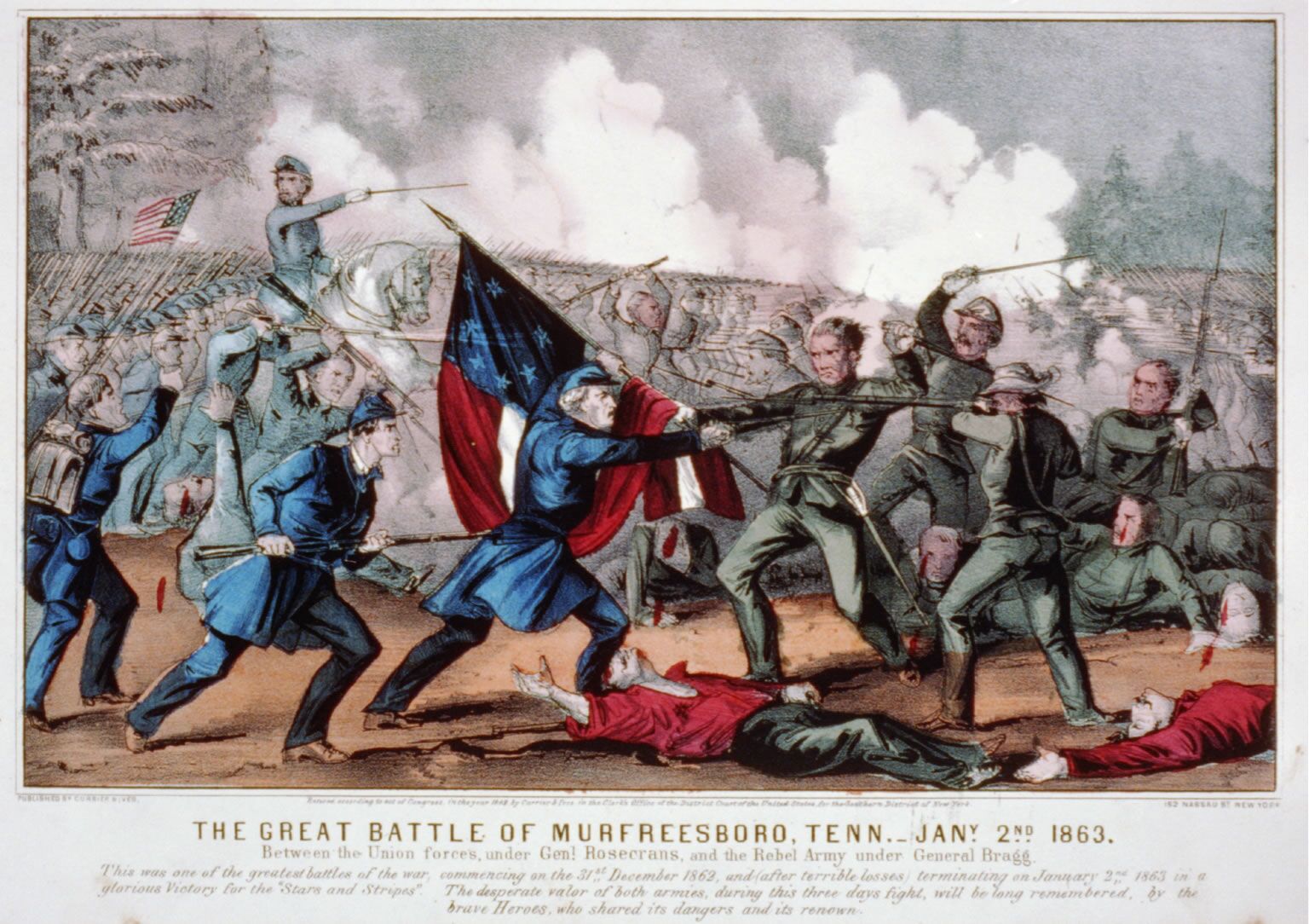Background on the Battle of Murfreesboro
While the Confederacy amassed victories in East, the news was almost always bad in the West. The difference was leadership. In Virginia, the Confederacy had the better generals. In the West, Union generals like Ulysses Grant, William Sherman, Phil Sheridan, and George Thomas, were more than a match for the likes of Confederates Albert Sidney Johnston, Braxton Bragg, Leonidas Polk, and P. G. T. Beauregard. In October 1862 the Confederates had both failed to retake Corinth, Mississippi, and been routed from Kentucky at the battle of Perryville (8 October 1862). The intolerable Braxton Bragg—the loser at Perryville, and unfortunately a favorite of Jefferson Davis—regrouped his forces at Battle of Murfreesboro, where he met Union General William S. Rosecrans in battle on 31 December 1862. 18 Bragg had about 34,000 men, Rosecrans about 44,000.
The Battle of Murfreesboro
The Confederates moved first, driving into the Federal right, overwhelming it, and swarmed ahead until they ran into Union General Phil Sheridan. Sheridan held the line, counterattacked, and then set up a new defensive line on the Federal right. His men fought hard, but when they ran out of ammunition, they had to fall back again, and the Union right began folding onto the Union left, like the blade of a pocket knife returning to its handle. Rebel yells pierced the air, and again butternut and grey uniforms surged ahead, even though many Confederates, their rifles fouled by rain, charged with sticks in their hands instead of guns.
The day could have been won by the Confederates had Generals Bragg, John C. Breckinridge, and Leonidas Polk committed themselves now en masse, but they did not. Instead, Bragg ordered Breckinridge’s men into the center of a well-defended Union line bristling with artillery, and General Polk, who directed the attack, sent the troops in piecemeal, which is how they were destroyed.
The Union army survived the first day of battle—and it was the only day that mattered. New Year’s Day was a day of inactivity, and an attempt to dislodge the Federals on 2 January was repulsed with heavy Confederate casualties. Bragg then abandoned the city of Murfreesboro. Both sides suffered casualties of about 13,000 men, but the Confederate losses had apparently been for nothing.
What You Need to Know:
Had Bragg delivered a Confederate victory to match Lee’s successes, the Union, as Lincoln noted in his letter of congratulations to Rosecrans after the battle, “could scarcely have lived.” As it was, Bragg’s failure at Battle of Murfreesboro meant that North and South entered 1863 with no end of bloodletting in sight.
Would you like to learn the complete history of the Civil War? Click here for our podcast series Key Battles of the Civil War
Cite This Article
"Battle of Murfreesboro (Dec. 31 —Jan. 2, 1862)" History on the Net© 2000-2024, Salem Media.
April 30, 2024 <https://www.historyonthenet.com/battle-of-murfreesboro-31-dec-2-jan-1862>
More Citation Information.

